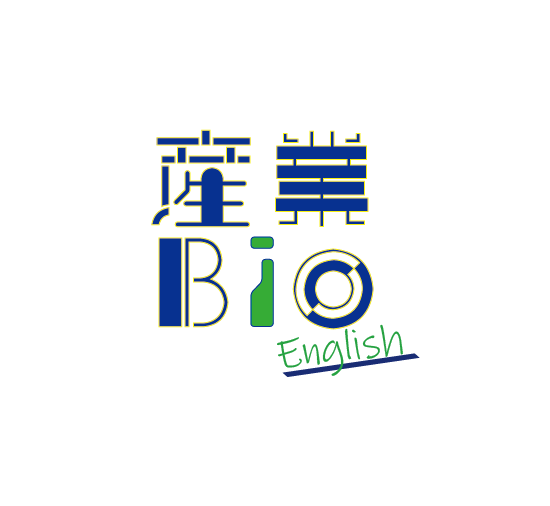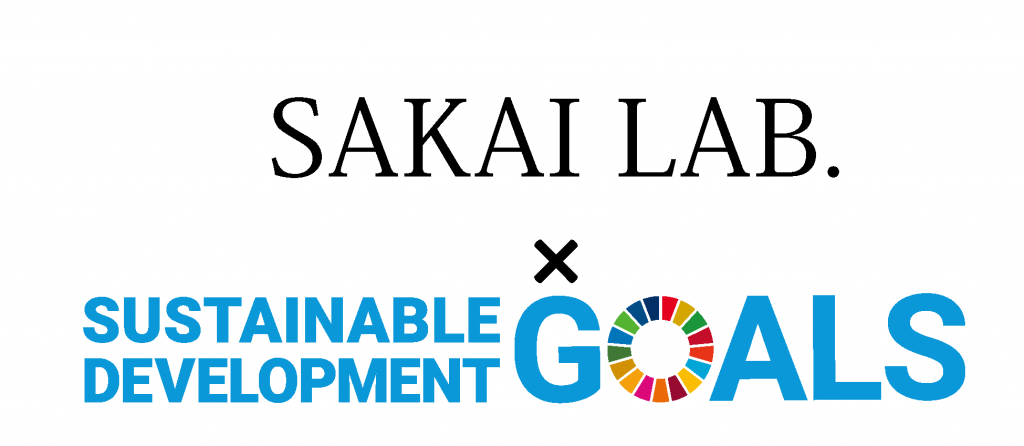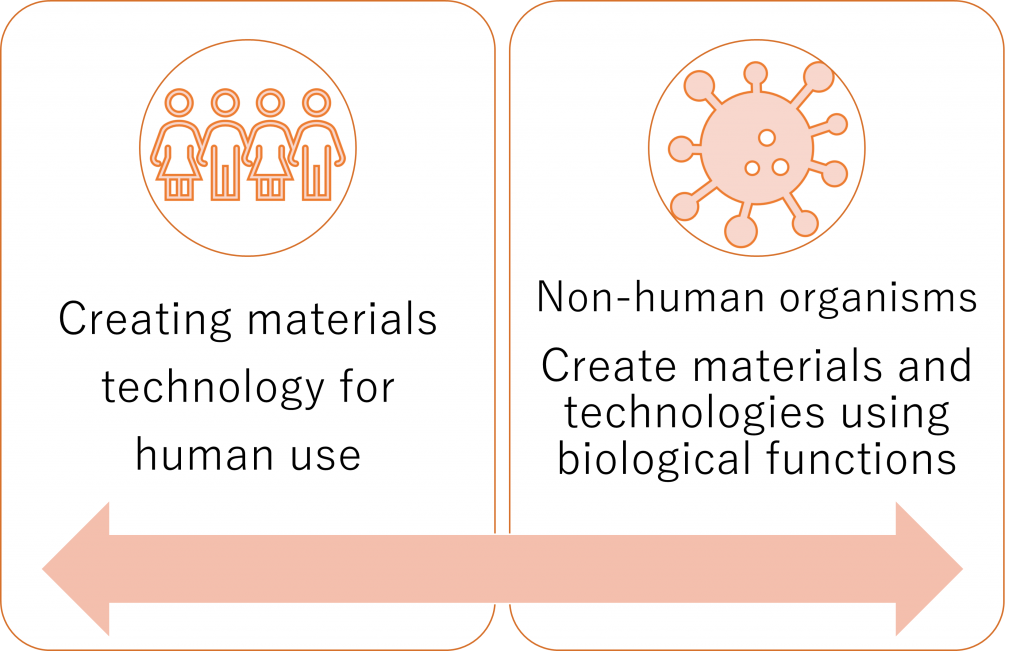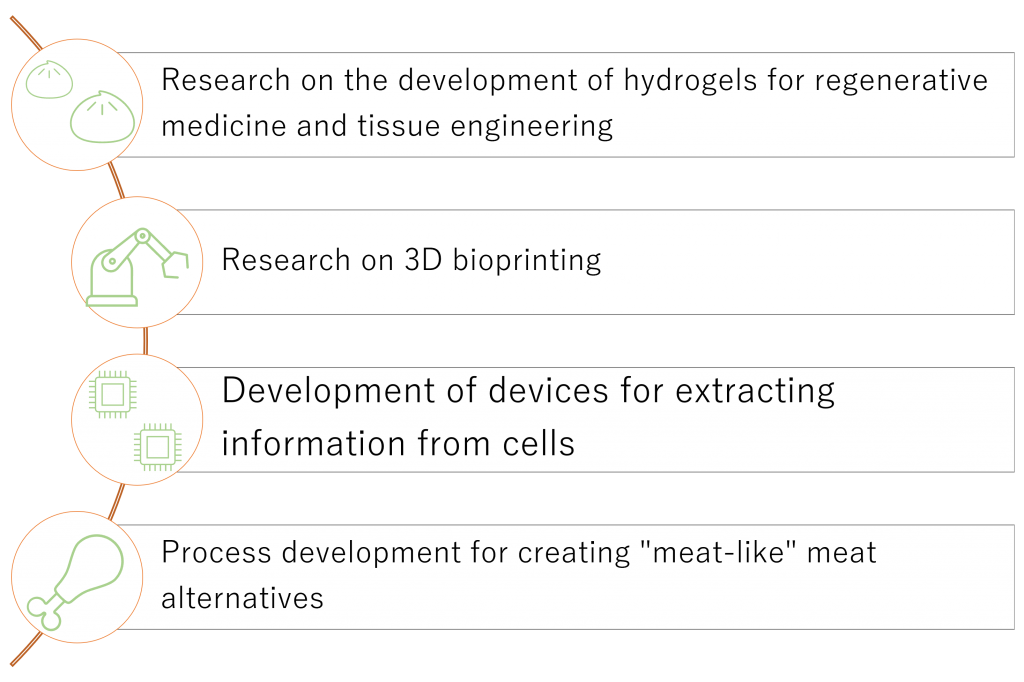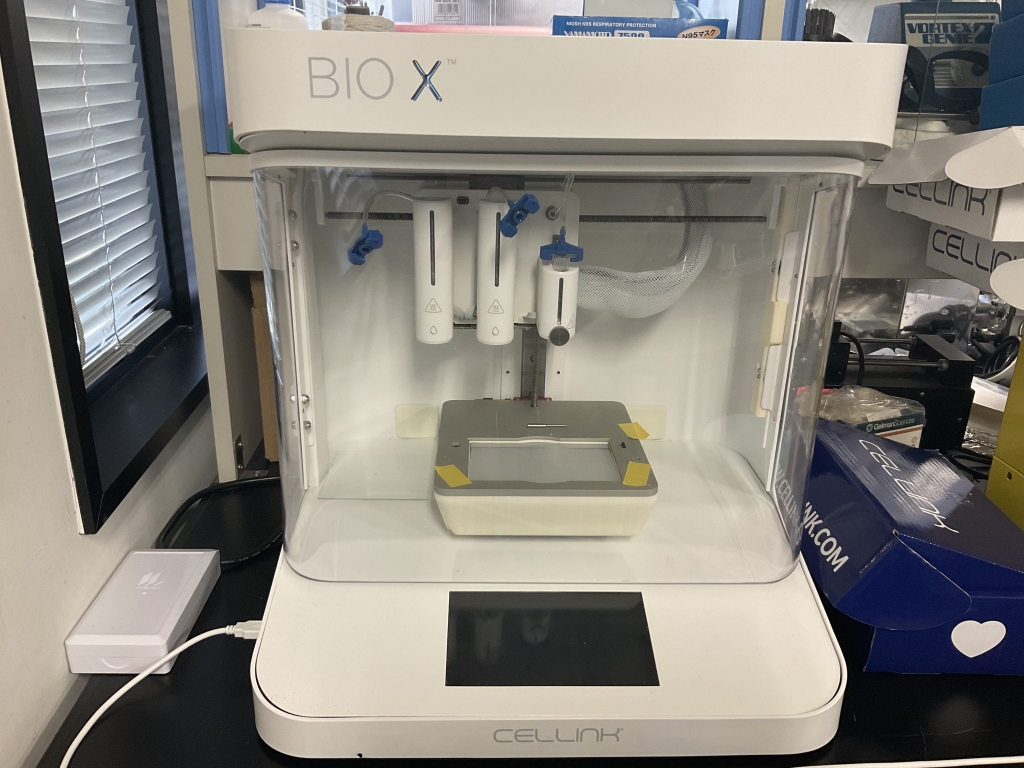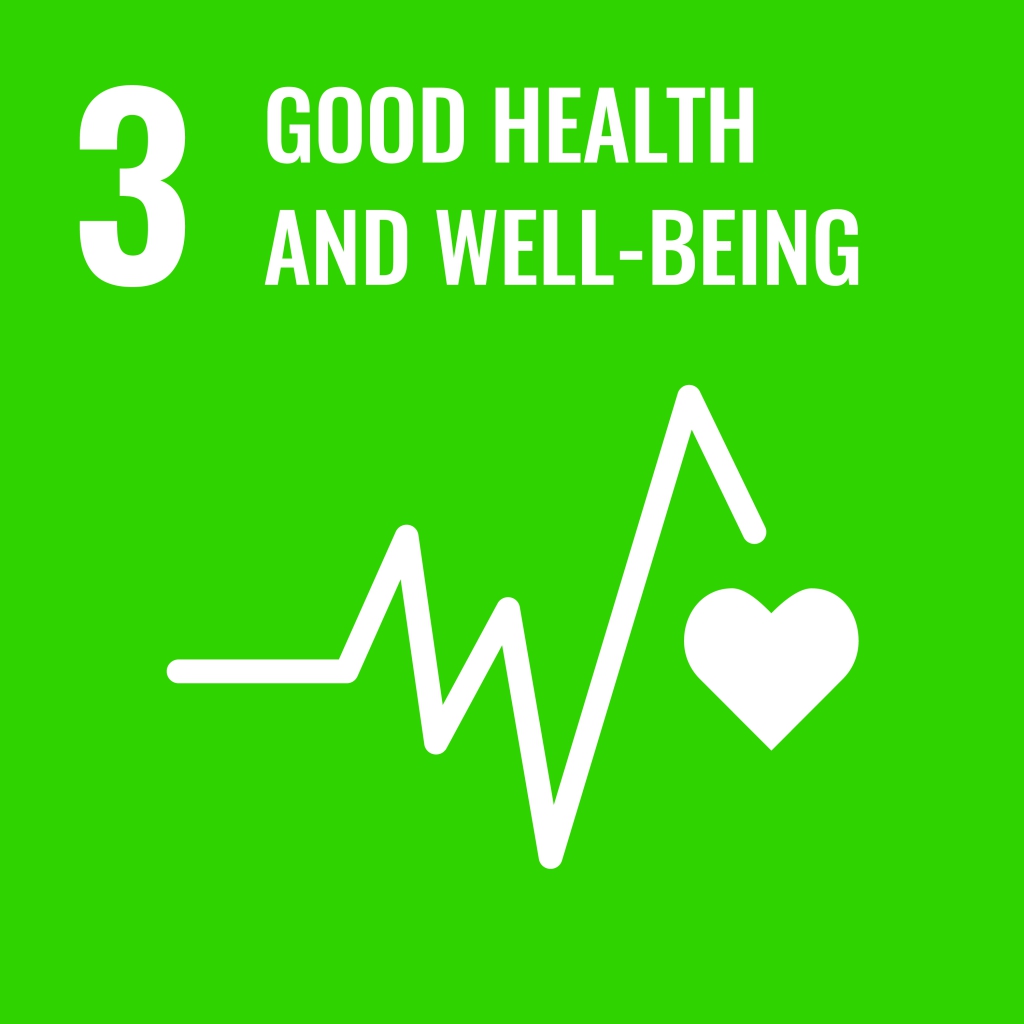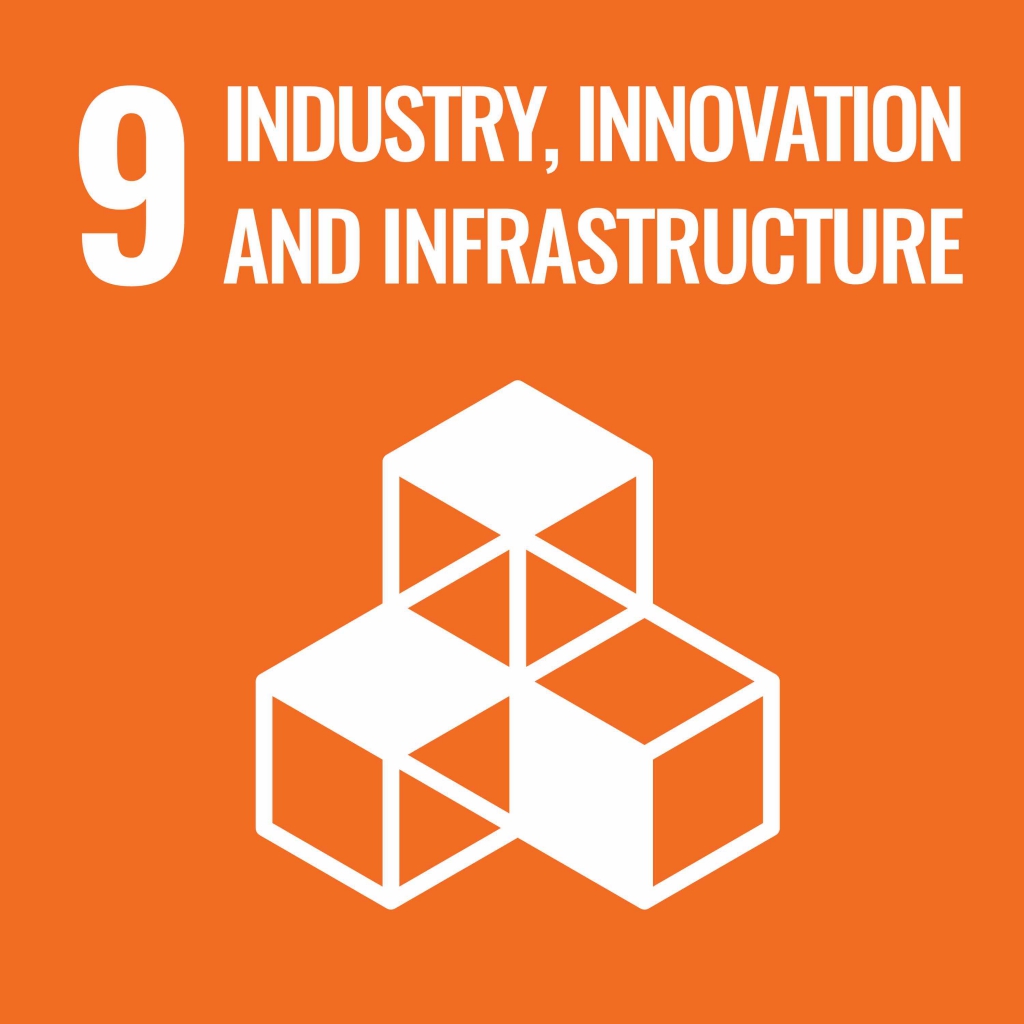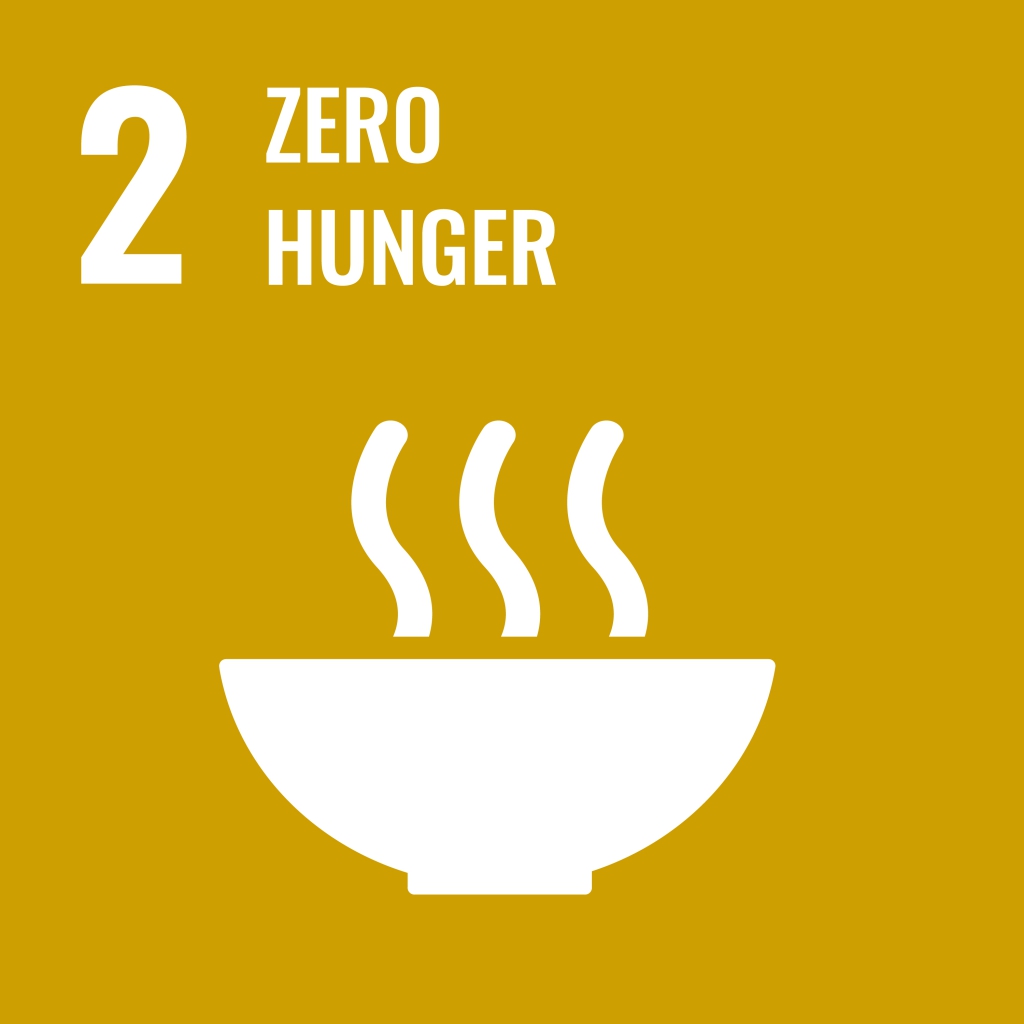We will achieve the SDGs in the field of medical and healthcare.

3D Bioprinting
Contribution of Biomaterials Design to Medicine and Health Care
Research for the development, design, and operation of technologies and processes that contribute to medical and health care is essential for the maintenance of comfortable living and industrial life for mankind. We aim to contribute to the medical and health care fields by “designing and developing methods to use the functions of living organisms as materials” and “developing materials and methods to control the functions of living organisms.
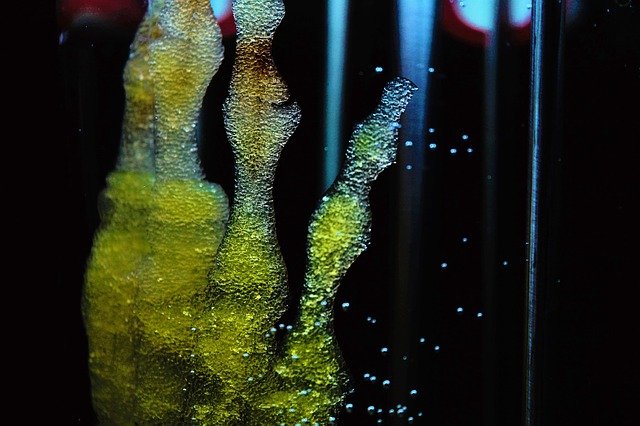
Development of materials that can produce hydrogels
Hydrogel is a material that easily blends with the human body and cells because it contains abundant water. In particular, we are working on the development of hydrogels with functions such as controlling the expression of functions in animal cells and removing contaminants from the human body.
- What is hydrogels ?
-
A general term for substances that contain water inside. Gel is “a polymeric material with a three-dimensional structure that is insoluble in any liquid,” and when the liquid is water, it is called hydrogel, such as Konjac, agar, and jelly.
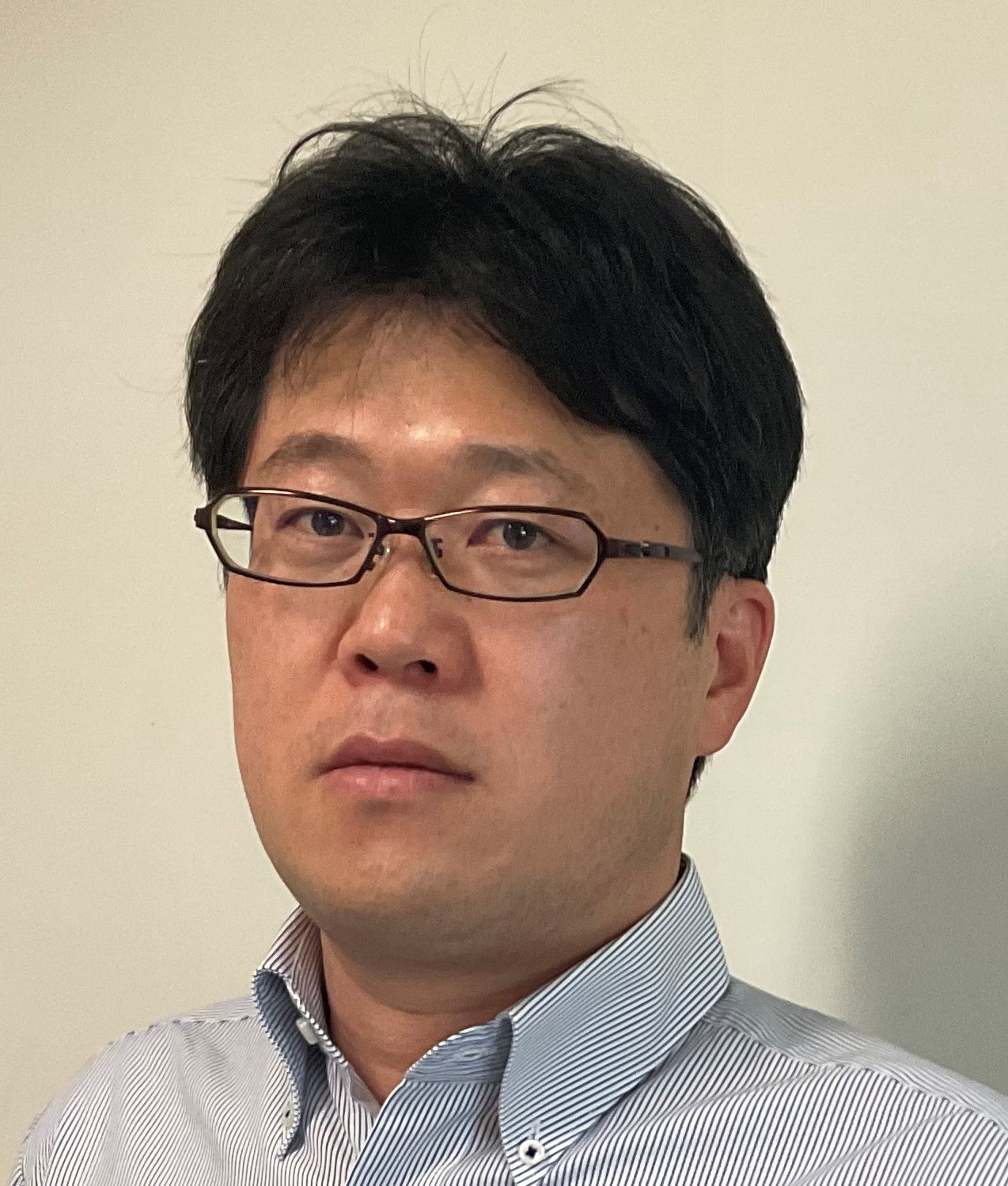 Prof.SAKAI
Prof.SAKAIWe are working on the development of hydrogels for regenerative medicine and tissue engineering.
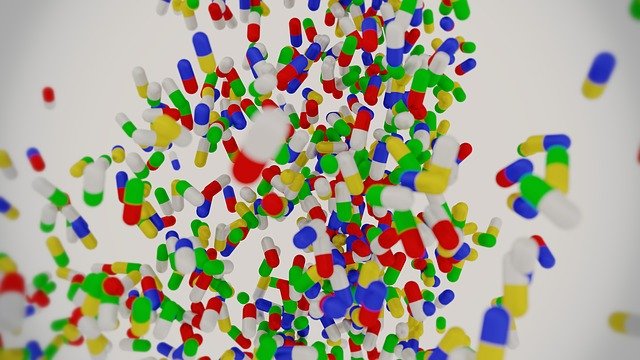

3D bioprinting to create substitutes for body tissues and organs
We are developing a technology for 3D bioprinting, using printers to create 3D structures containing cells. The development of this technology requires advances in inks and printers, just like regular printers.



Starting from the above research on the use of hydrogels for regenerative medicine and tissue engineering, we aim to realize a highly accurate printer using ink, which is a non-Newtonian fluid with non-linear viscous properties.
Development of informational devices to be retrieved from cells
Cells, including their microscopic organelles, have different physical properties depending on their type and state. If we can extract information about these properties with high precision, we can better understand the state of the cell itself. We are working on the development of methods and devices to extract such information.



We are working not only on the development and enhancement of the sensor element itself, but also on the development of materials to improve the sensor sensitivity.
Process development for creating “meat-like” meat alternatives
The increase in the global population is expected to increase the consumption of meat produced by raising animals such as cattle and pigs, which in turn will increase the environmental destruction caused by animal breeding. The widespread use of alternative meats is expected to contribute to curbing the global environmental destruction caused by meat. We will develop unique materials and molding methods” to create “meat-like” meat alternatives that can be enjoyed by people from children to the elderly.



Our goal is to create an environmentally friendly alternative to meat that people will prefer as “meat,” not only for the ingredients it contains, but also for its texture and appearance.
